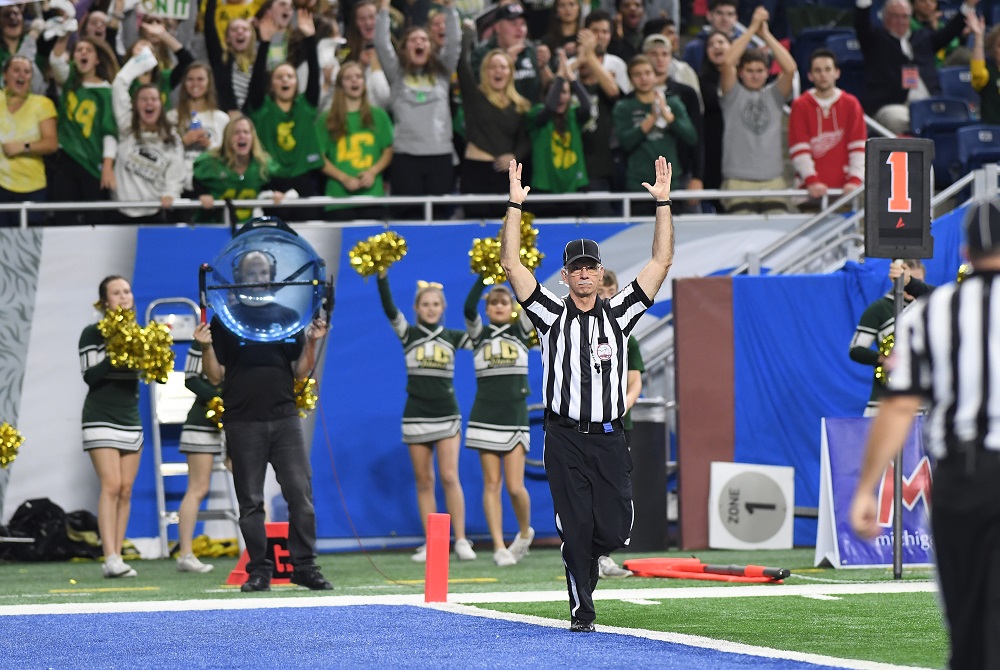
Be the Referee: 40-Second Play Clock
August 30, 2018
In this week's edition, assistant director Brent Rice explains how Michigan is continuing to experiment with a 40-second play clock in football.
Be The Referee is a series of short messages designed to help educate people on the rules of different sports, to help them better understand the art of officiating, and to recruit officials.
Below is this week's segment – 40-Second Play Clock - Listen
There’s an experiment taking place on a number of high school football fields across the state again this year. Michigan is experimenting with a 40-second play clock in football.
This is designed to provide more consistency from play to play as the ball must be snapped 40 seconds after the end of the previous play and is not dependent on the referee’s subjective signal.
When play is continuing without a stoppage, the 40-second play clock will be used. If play has been stopped for a time out or penalty, the play clock will be set at 25 seconds.
After two seasons, the feedback received from coaches and officials has been very positive, and there’s a possibility the Michigan experiment may become a new national playing rule soon.
Past editions
August 23: Football Rules Changes - Listen

Be the Referee: Receiver Carried Out of End Zone
By
Sam Davis
MHSAA Director of Officials
November 4, 2021
Be The Referee is a series of short messages designed to help educate people on the rules of different sports, to help them better understand the art of officiating, and to recruit officials.
Below is this week's segment – Receiver Carried Out of End Zone - Listen
A football play for you to rule on today. The quarterback throws a pass to an eligible receiver in the end zone. The receiver jumps and makes the catch, but before he lands, a defensive player wraps him up and carries him out to the 2-yard line, where the receiver finally touches the ground.
What’s the call? Is the ball spotted at the 2-yard line where the receiver finally made contact with the ground? Or is it a touchdown?
Send out the extra-point team because it’s a touchdown. The receiver’s forward momentum was stopped in the end zone, while he had possession of the ball … which is considered a touchdown catch. He does not have to get a foot or any other body part down in the end zone for it to count.
Previous editions
Oct. 28: Volleyball Back-Row Block – Listen
Oct. 21: Soccer Disallowed Goal – Listen
Sept 30: Field Goal Falls Short – Listen
Sept. 23: Volleyball Obstruction – Listen
Sept. 16: Catch or No Catch – Listen
Sept. 9: Intentional Grounding – Listen
Sept. 2: Pass Interference – Listen
Aug. 26: Protocols and Mechanics – Listen

